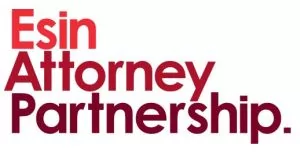Recent Development
The recent amendments to the Capital Markets Law established a bondholders' meeting enabling investors to act jointly and allowing the appointment of bondholders' representatives.
The Capital Markets Board (the "CMB") presented the Draft Communiqué on Noteholder Meeting (the "Draft Communiqué"), providing the details of this new mechanism, for public consultation on April 22, 2020.
The Draft Communiqué introduces rules and procedures regarding the structure of the noteholders meeting, determining the representative of the noteholders, the noteholders meetings procedure, the debt instruments to be issued outside of Turkey and the measures that can be taken in the event of the issuers' default.
What's New?
Noteholders meeting structure
The noteholders meeting will be formed by those who own the issuer's debt instruments. The procedures regarding the noteholders meeting operation will be determined in the prospectus or other offering documents.
The noteholders meeting will be convened by both the issuer's board of directors and the noteholders.
The noteholders meeting will be authorized to make changes to the interest, maturity, principal and other main terms and conditions set out in the debt instrument's prospectus or issuance certificate.
Secured noteholders and debt instrument holders whose instrument is covered by a security trustee agreement will be entitled to form a separate noteholders meeting wherein they can take decisions regarding these instruments.
The tranche noteholders meeting will be formed separately for each tranche. All decisions that the tranche noteholders meeting takes with qualified majority (a minimum two-thirds of the nominal value) will be binding upon all of the noteholders, even those opposing the decisions or those not participating the meetings even they are duly invited.
Other tranche noteholders will be authorized to convene a general noteholders meeting, if the decisions that the tranche noteholders meeting takes and the issuers' board of directors approves adversely affect the rights of the those holders.
This general noteholders meeting will take all decisions with a minimum two-thirds of the nominal value, and these decisions will be binding upon the tranche noteholders meeting as well.
Any changes to the financial or operational commitments made by the issuer in the prospectus or the issuance certificate will be subject to the approval of the tranche noteholders meeting. The tranche noteholders meeting will take these decisions with the vote of the noteholders representing more than half of the nominal value of the debt instrument.
Determination of noteholders' representative
For each tranche of debt instruments, a representative will be elected by the vote of the noteholders representing more than half of the nominal value of the debt instrument. All fees and expenses of the representative will be paid by the issuer, however, this rule is inapplicable if the issuer is a bank.
A temporary representative can be determined via the prospectus or the issuance certificate until the election occurs. The representative can be the same or different real or legal persons for different tranches of debt instruments.
The representative of debt instrument holders must not have been convicted of certain offenses set out under the Draft Communiqué and must have sufficient professional knowledge and experience.
The representative will protect the rights of noteholders in accordance with the equal treatment principle in the event of conflict of interests between the issuer and the debt instrument holders.
Noteholders meeting procedures
Noteholder meetings will primarily be held physically unless otherwise stated in the prospectus or the issuance certificate. However, the resolutions can be adopted without physical meeting but by physically or electronically circulating the resolutions among the noteholders for signatures.
Public companies listed on the exchange and issuers who offered their debt instruments to the public must provide the opportunity to the debt instrument holders in order to participate in noteholders meetings electronically and physically.
Debt instruments owned by the issuers or their related parties will not give their holders the right to participate in noteholders meetings or the right to vote.
Measures that noteholders can take in the event of issuer's default
All obligations arising from the debt instrument and the events of default in relation to this instrument must be expressly defined in the prospectus or the issuance certificate.
If the terms and conditions of the debt instrument are restructured due to the issuers' default, all enforcement proceedings initiated for the debt instrument and all interim injunctions must be automatically suspended as of the change's date.
The issuer cannot make any prepayments to third parties or buy back or redeem the debt instrument without the tranche noteholders decision to restructure the main terms and conditions of the debt instrument if the issuer does not fulfill or, it is obvious that the issuer will be unable to fulfill, any payment obligations related to the instrument.
Debt instruments that are issued outside of Turkey
The Draft Communiqué will not apply to the debt instruments issued outside of Turkey (e.g. Eurobonds).
Issuers that have issued debt instrument in and outside of Turkey must obtain the consent of the general noteholders meeting if they plan to provide additional securities in favor of the foreign debt instrument holders.
Conclusion
The Draft Communiqué clarifies the principles and procedures of the noteholders' board, which is currently regulated under the Capital Markets Law No. 6362, introducing this revolutionary concept to the Turkish capital markets practice. You may submit your opinion on the Draft Communiqué to basktaslak@spk.gov.tr via e-mail or in writing to the CMB until May 15, 2020.
The content of this article is intended to provide a general guide to the subject matter. Specialist advice should be sought about your specific circumstances.


